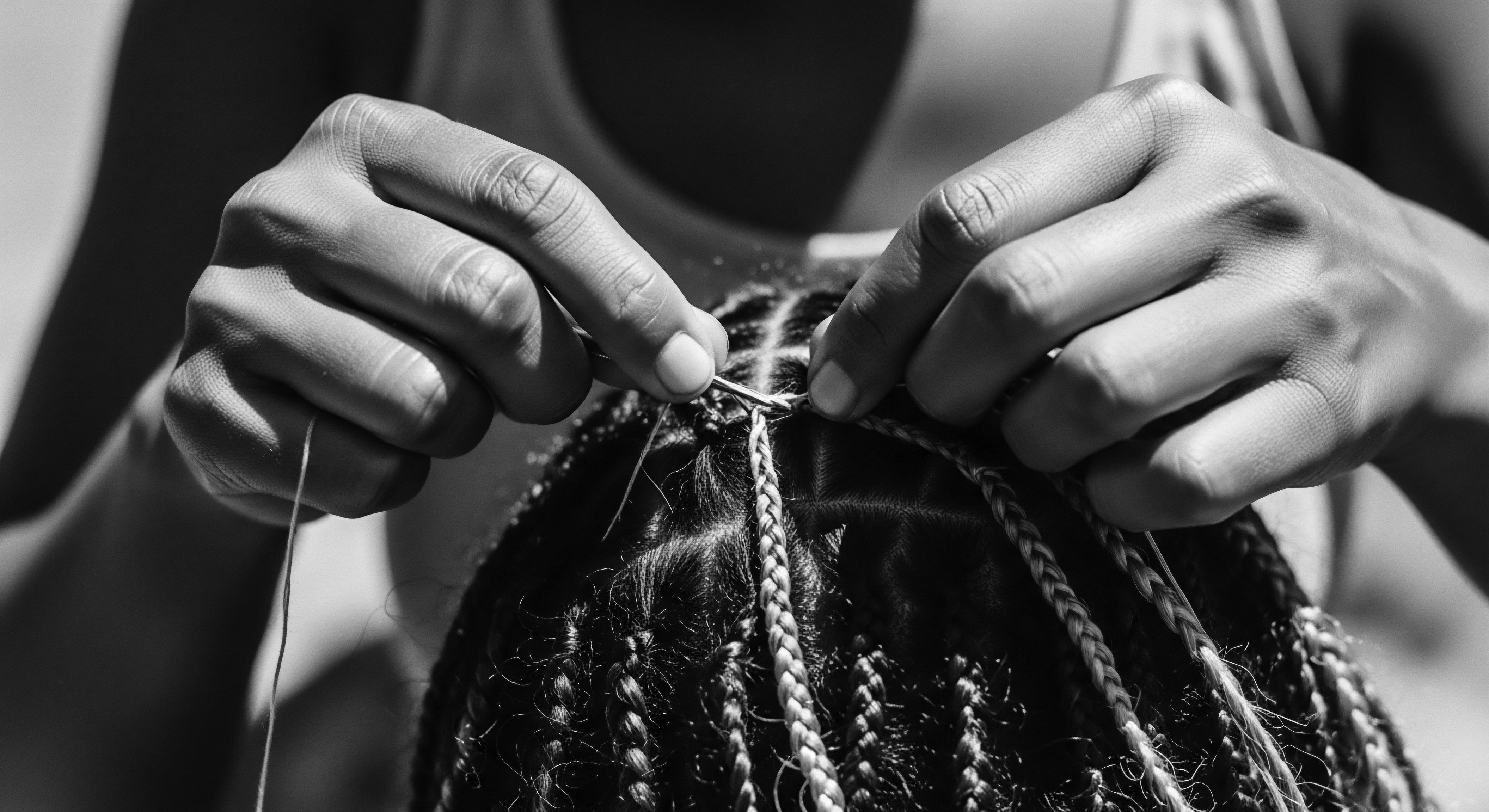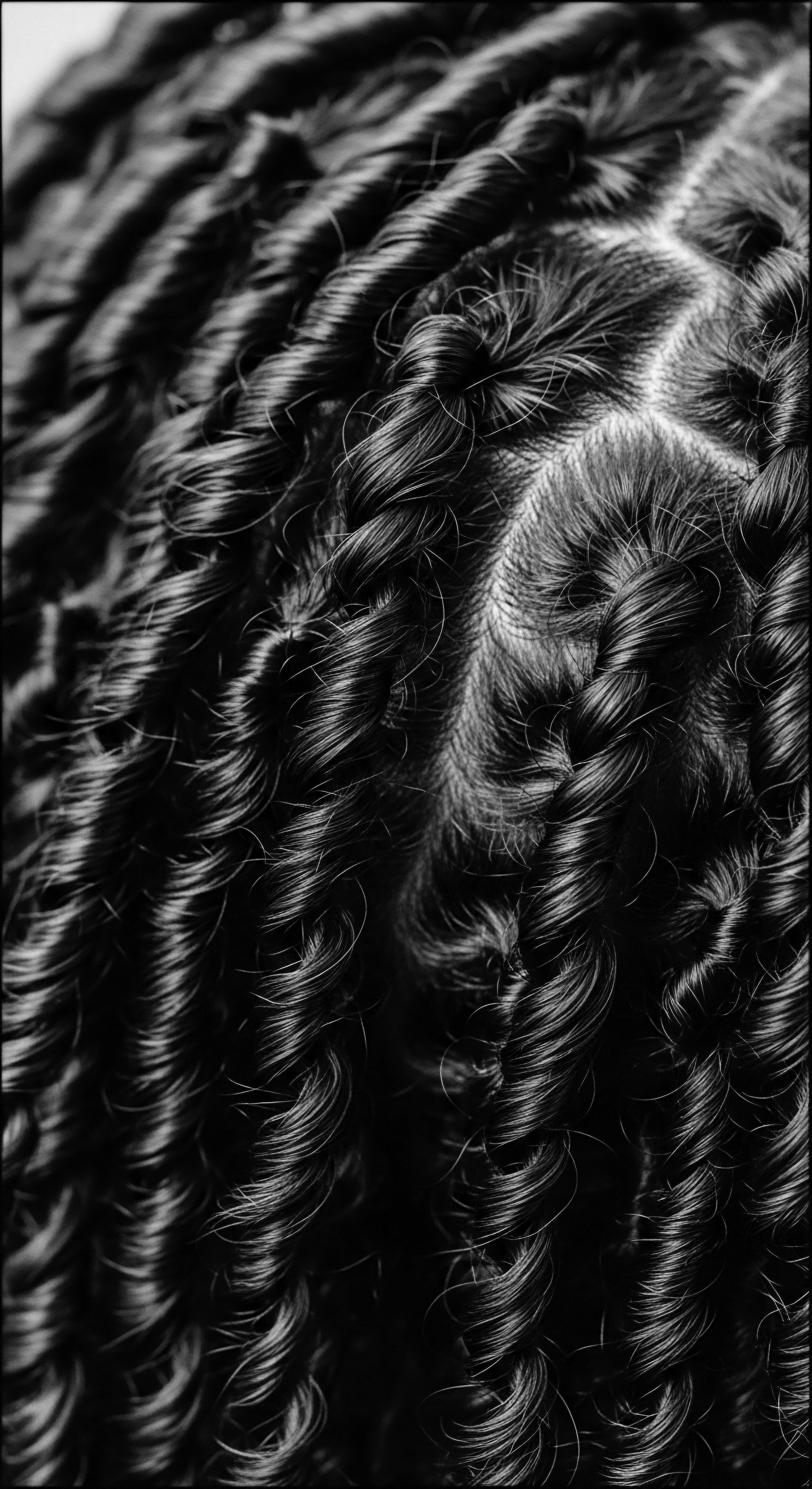
What is the science behind silk for textured hair?
Silk protects textured hair from friction and moisture loss due to its smooth protein fibers, honoring centuries of protective hair care heritage.

Why does silk promote moisture retention in textured hair?
Silk's smooth surface and protein composition minimize friction and preserve natural moisture, honoring centuries of protective textured hair heritage.

Why is silk beneficial for textured hair?
Silk's gentle touch honors textured hair heritage by reducing friction and preserving moisture, aligning with ancestral protective practices.

Silk Protein
Meaning ❉ Silk Protein, composed of fibroin and sericin, is a natural biopolymer offering protective and strengthening benefits, deeply connected to textured hair heritage and ancestral care practices.

Why is silk preferred for textured hair moisture retention?
Silk is preferred for textured hair moisture retention because its smooth protein fibers minimize friction and prevent hydration loss, honoring ancestral protective practices.

